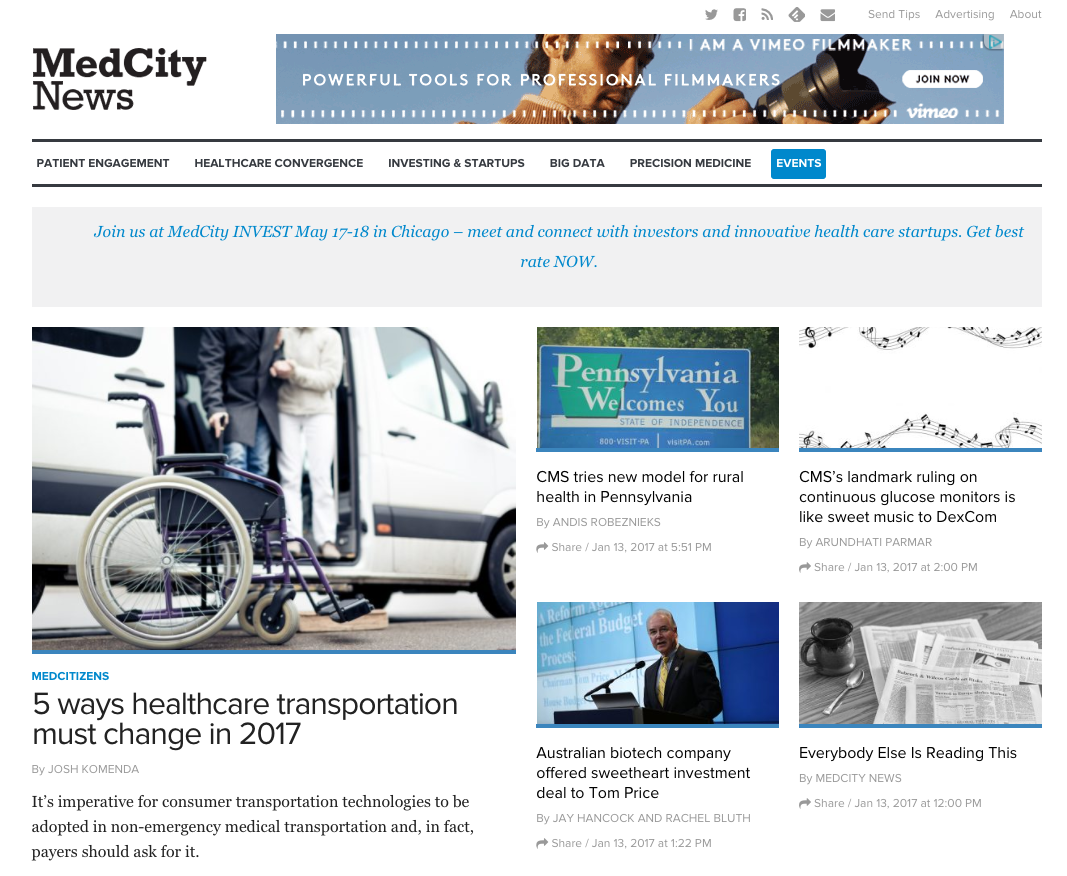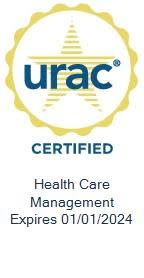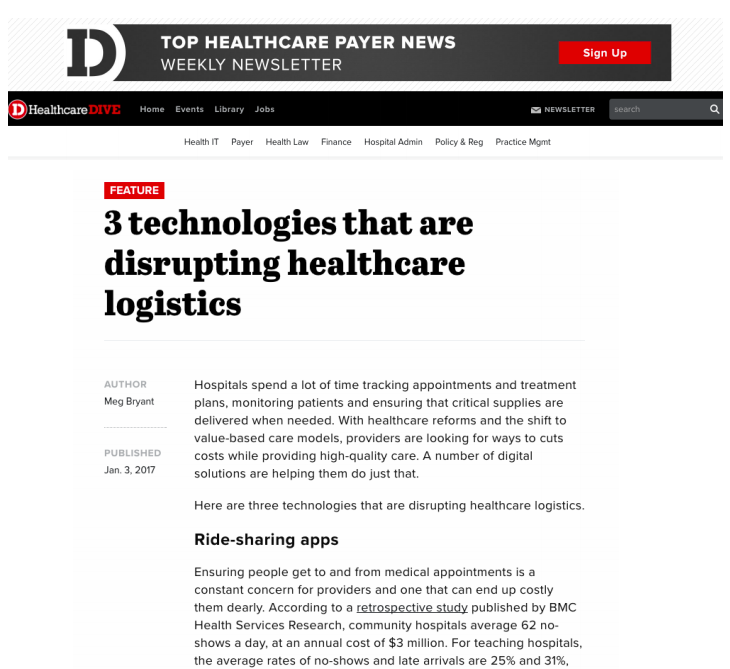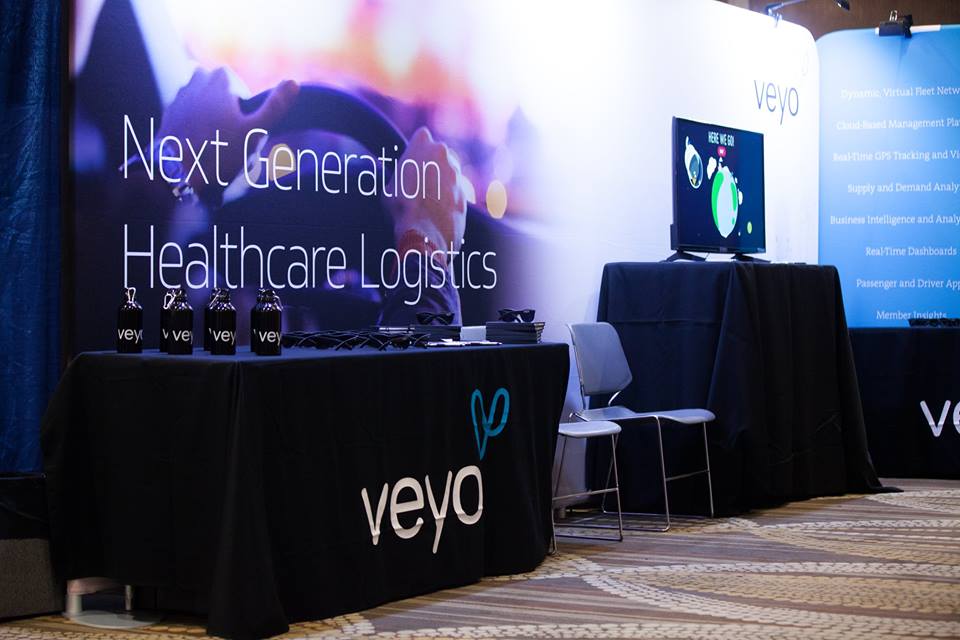Five ways healthcare transportation must change in 2017
January 13, 2017
Josh Komenda shared his thoughts on the future of healthcare transportation in the latest post from MedCity News. You can find the original article here.
Each year, our country’s Medicaid agencies and managed care plans spend nearly $5 billion getting Medicaid members to and from healthcare appointments as part of their health insurance and non-emergency medical transportation (NEMT) benefit.
That seems like a massive expenditure until you consider how investing in a $30 ride that ensures someone gets to dialysis, receives proper immunizations or sees their primary care physician after having cardiac symptoms can dramatically reduce emergency room visits, improve long-term health outcomes and reduce overall healthcare costs.
Unfortunately, 3.6 million Americans still miss or delay care each year due to transportation issues. Most of the country’s transportation budget is allocated through NEMT brokers that are responsible for ensuring those with Medicaid have access to the transportation benefit when needed. Yet across the country, rides are scheduled that never show up, drivers arrive hours late, patients are left stranded after appointments, and fraud, waste, and abuse of the benefit is rampant.
Technology-enabled transportation services and new rideshare service models dramatically transformed the expectations of consumers over the past five years. Traditional NEMT brokers, however, have an antiquated model and aren’t implementing the available technology advances seen in consumer transportation for healthcare.
Here are five ways healthcare transportation must change in 2017 to dramatically reduce the cost of care while significantly improving outcomes:
- Adapt performance advancements from consumer ridesharing for healthcare
There are new standards in consumer transportation around real-time GPS tracking, transparency, and systems that better adapt to supply and demand. In a typical ridesharing model, larger, more flexible fleets of part-time drivers can grow when demand peaks and shrink when not needed. People used to order a cab on a busy Friday night and expect it to take nearly an hour to show up, if it showed up at all. Today’s consumers request a vehicle, watch it drive up on a map and hop in five minutes later. That same sort of transparency, reliability and responsiveness is possible to adapt for Medicaid NEMT programs and payers should demand it.
- Put transparency at the core – of everything
NEMT programs vary in size and scope across the country. Many large Medicaid Managed Care Plans and Medicaid State Agencies spend upwards of $20, $30, $40 and even $100 million dollars annually on NEMT programs. These seem like large budgets until you consider how critical these services are in keeping Americans healthy and costs down in the overall Medicaid budget. What is unacceptable, though, is many payers have very little detail about the actual outcomes of services carried out and how their budgets are impacting patients. GPS technology and data analytics are ubiquitous across industries today, yet few NEMT vehicles in the traditional space are tracked in real-time (or at all) by the broker. Utilization detail, performance data (such as on-time rates or missed trips) and encounter details are sparse, vague and infrequently reported. Payers funding programs of any scope and size should demand real-time tracking of all data and dashboards available 24/7. - Bring the economic efficiencies of new technology and rideshare models to plans and taxpayers
Cost savings in the consumer space have been greatly improved over the past five years, in large part because of the introduction of the ridesharing model. Ridesharing allows private vehicles to deliver transportation service on a temporary basis – that’s the key reason why consumer transportation network companies (TNCs) can often be half the price of a taxi. However, consumer TNCs aren’t setup for the needs of healthcare, and don’t meet the federal requirements for Medicaid reimbursements. By bringing this same model to the healthcare space while adhering to the important regulatory requirements of the industry, NEMT can evolve to maximize these economic benefits so that they are felt by taxpayers.
- Use technology to ensure control of fraud, waste, and abuse
Like any social service of this scale, some unscrupulous providers and individuals abuse or defraud the system to get free rides outside the mandate of the program or to bill for rides that never occurred. Traditional NEMT brokers still keep paper records or rely on self-reported data for trip activity, giving them extremely low visibility as to what’s actually happening on the street every day. Consumers are used to seeing email and text receipts with time- and GPS-stamped routes. We live in a world where sophisticated systems can comb through transaction data to spot suspicious patterns or anomalies. For example, technology can make it much easier to detect when someone is dropped off at a shopping mall instead of their doctor’s office. - Make communication between NEMT brokers and healthcare providers seamless, in real time
Even as ridesharing can play a greater role in providing more flexible capacity and economic advantages, traditional commercial providers will still play a vital role for many NEMT trips – especially those requiring specialized equipment such as a wheelchair-accessible vehicle. It’s critical, however, that NEMT brokers help providers modernize and share information and the efficiencies created through the use of technology, tablets and GPS tracking. While many providers do use dispatch systems, brokers are not able to effectively aggregate the data from various provider systems and, as a result, data is still patchy, late and incomplete.
We live in a world where technology exists to track, monitor, analyze, improve and mobilize resources in real time, on time, every time. Today’s technology is affordable and can help industries significantly save while simultaneously delivering better performance. NEMT is certainly not alone in its challenges to adapt, but in 2017, it’s possible and absolutely crucial that adaptation takes place.




